Day Two of Strong Towns National Gathering 2025
Urbanists from Dallas, TX traveled to Providence, RI for annual gathering of Strong Towns advocates. Here's how our second day went!
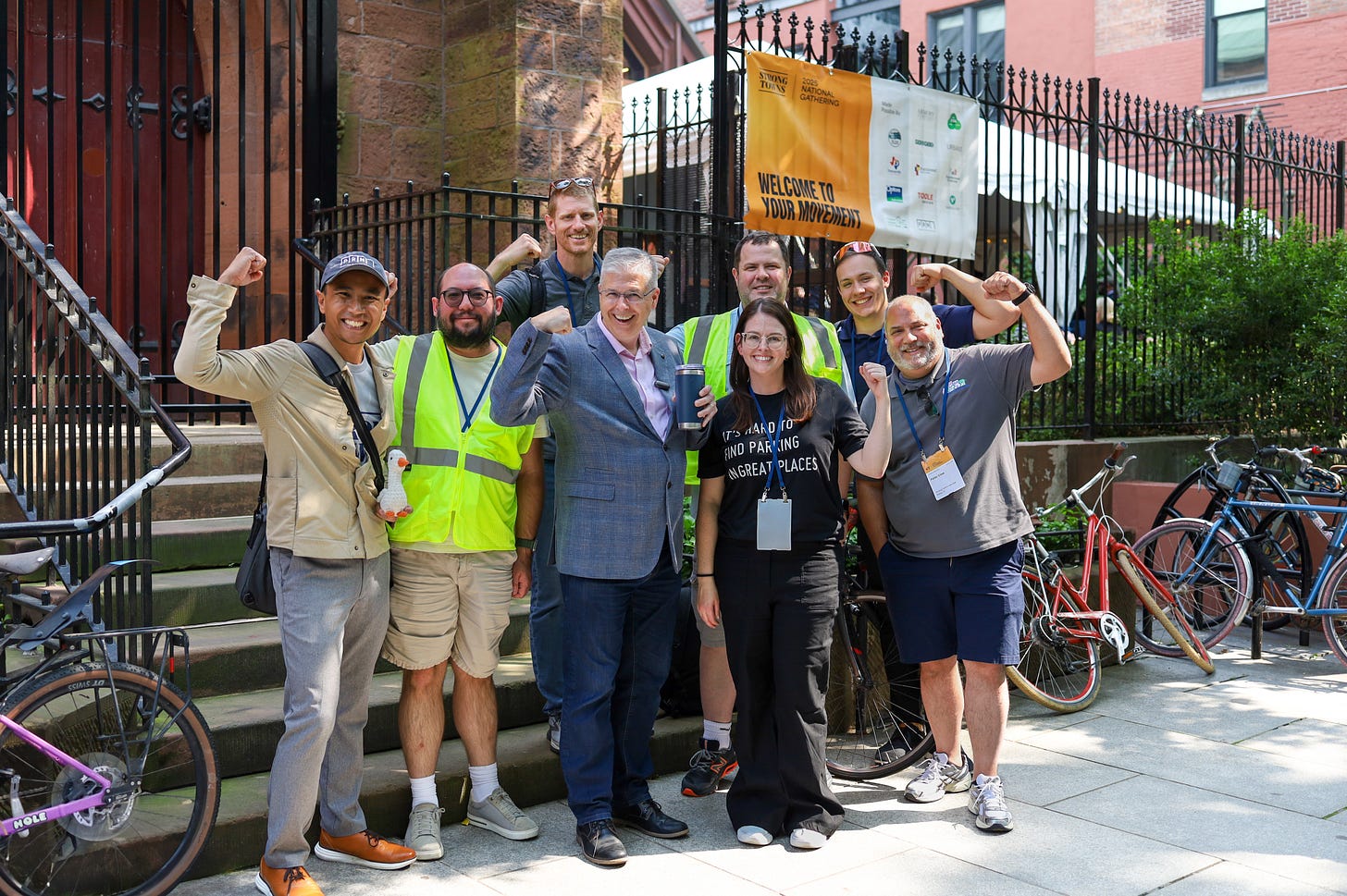
This past Wednesday marked the second and final day of the Strong Towns National Gathering—an annual conference that brings together volunteer advocates, urban planners, and public officials from across the U.S. to exchange ideas, lessons, and strategies for building stronger communities.
In my last post, I shared a few notes from our group about Day One. In this post, I’ll highlight key moments from Day Two.
Dallas-led sessions
We didn’t just represent our city as participants—some breakout sessions were led by fellow Dallasites! Monte Anderson, vice president of Neighborhood Evolution, gave a presentation titled Churches, Golf Courses, and Shopping Centers: How the Big Stuff Can Become an Asset—Not a Problem—in Your City. Krista Nightengale, executive director of the Oak Cliff–based Better Block Foundation, presented Better Block: Transforming “What Ifs” into Community Wins.
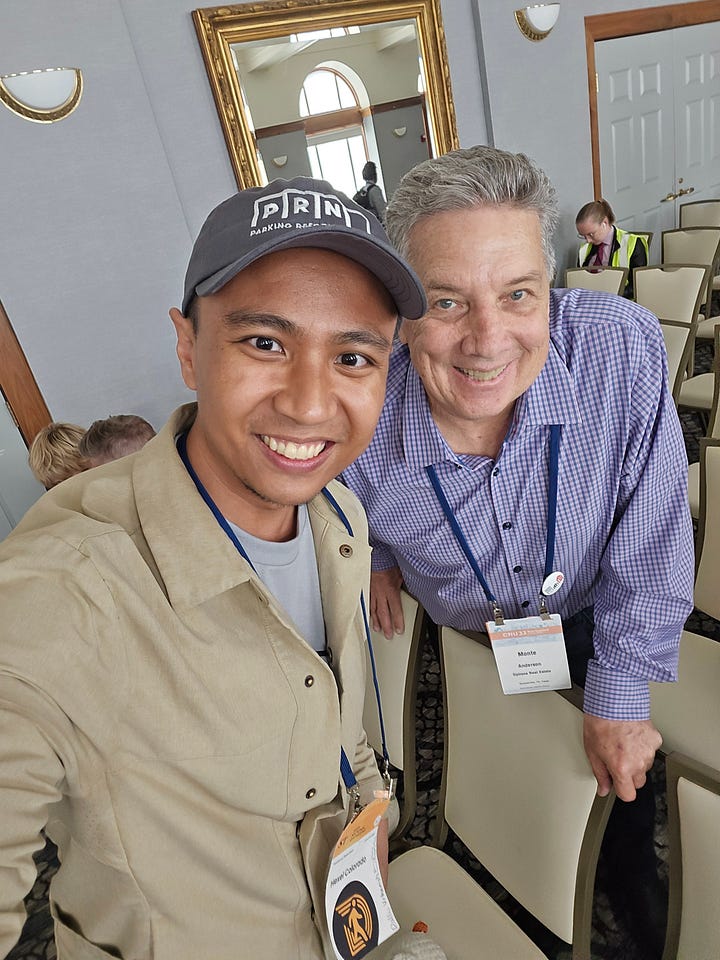

Parking Reform Network
During the session Learn How to Make the Case for Parking Reform in Your Community, led by Tony Jordan and Daniel Herriges of the Parking Reform Network, I was honored to join the Q&A panel to discuss the advocacy efforts that led to our recent parking reform victory in Dallas.
They also played a clip from the YouTube video created in collaboration between Dallas Urbanists STLC and the Better Block Foundation. That media project took countless hours of work over two months, so I felt a deep sense of pride seeing it presented on a big screen in front of a large audience—and hearing Tony and Daniel speak about its wide reach and impact.
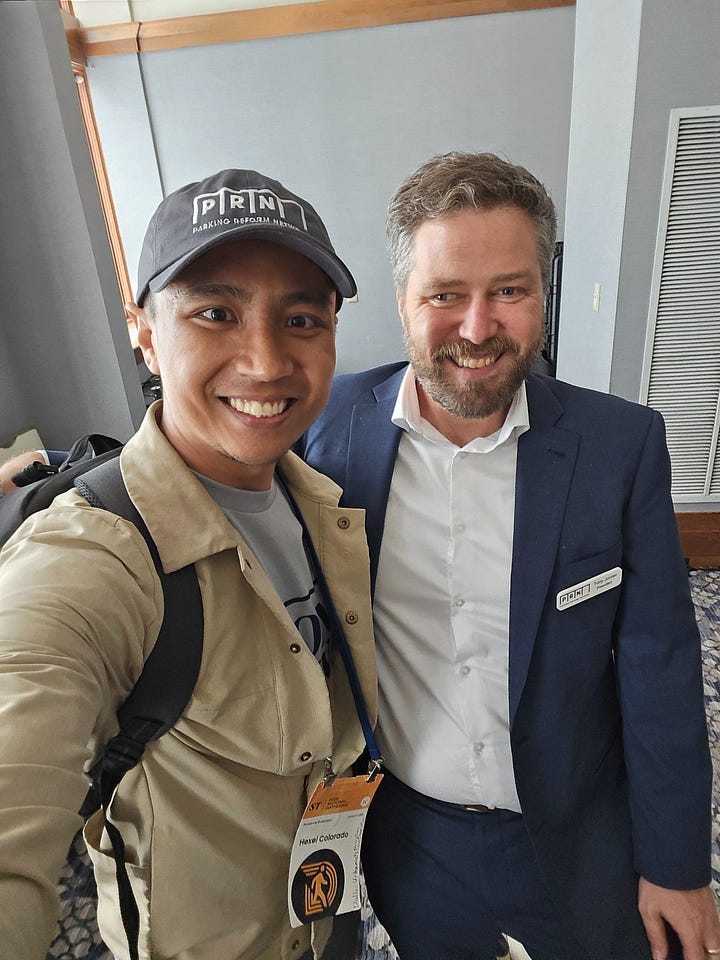

Breakout session highlights
Just like on Day One, our North Texas contingent took notes from the sessions we attended. Honestly, each session was packed with so much valuable information, I could write a full article on every one of them. But for now, here are just a few highlights.
Building Strong Towns as an Elected Official (by John Reuter) — As advocates, speaking at public hearings is important—but even more important are the emails and conversations that take place between those hearings.
Not Just Noise: Using Social to Move People (by ) — If you notice me posting short-form videos more frequently after this week, it’s thanks to the inspiring stories and advice from the Happy Urbanist! One idea I’m especially eager for our social media team to implement is building relationships with city council members by engaging with them regularly on social media—not just commenting and tagging to criticize when they get it wrong, but also to praise them when they get it right.
How a Block Party Can Change the World (by Vanessa Elias) — Notes from
:We have a severe loneliness epidemic. Most people don’t know their neighbors. One solution is block parties!
Remember, you’re organizing, not hosting. You don’t need to do and bring everything. You can split it out, like a potluck.
Keep it simple. Doesn’t have to be a street, can be a park or front lawns or something. Just not inside someone’s home.
Aim for maybe 20 to 30 people. But fewer is fine! As long as least four people from two homes show up, that’s a success.
Walking Tour: How to Host a Walk Audit (by Edward Erfurt) — Notes from
:“There are lots of terms for walk audits—some people call them Jane’s Walks. If you call it ‘a walk about nothing,’ that’s how you get elected officials to show up—no agenda needed!”
Anyone can buy a radar gun and a measuring wheel. Wear a high-vis vest, and people will treat you like an authority.
Bring a few people, go slow, take plenty of notes, and observe everything you can—you’ll notice all kinds of things you’d otherwise miss.
Churches, Golf Courses and Shopping Centers: How the Big Stuff Can Become an Asset—Not a Problem—in Your City (by Neighborhood Evolution) — Notes from Dhiren P.:
The context of a place and its market conditions should guide how a space is used or redeveloped—not just our personal preferences.
City managers are a valuable asset. Build relationships and collaborate with them, rather than simply telling them what to do. It’s also important to engage with economic development councils and business improvement districts.
The real opportunity often lies in the "ugly" building, parking lot, or overlooked space down the road that no one wants. In these cases, the city may be eager for revitalization and more likely to offer concessions or support your proposals.
Always remember: the goal is to lift from the bottom up.
From Demands and Decay to Renaissance: Our Park and Recreation Systems in Focus (by Jamie Sabbach) — Notes from Dhiren P.:
We’re facing an infrastructure crisis rooted in the idea of deferred maintenance. It’s often easy to get funding to build something new—like a bridge—because it’s a capital asset. But maintenance gets postponed due to budget constraints, reallocation of funds, or limited maintenance budgets. Eventually, the asset becomes unusable, requiring closure or costly repairs.
We’ve also struggled to distinguish needs from wants. For example, residents might ask for a pickleball court, and officials approve it without considering whether it’s truly needed. This kind of decision-making contributes to the financial strain on our parks and recreation systems.
The first step in responsible planning should be a conditions assessment—a detailed review of current assets and infrastructure, including everything from garbage cans and sidewalks to parking lots.
Many people don’t understand what their tax dollars actually pay for. In one Oregon town, every resident pays a $35 arts fee as part of their taxes, yet the arts remain underfunded. People assume the fee covers everything and expect programs to be free, when in reality it doesn’t come close—highlighting the need for clearer public communication.
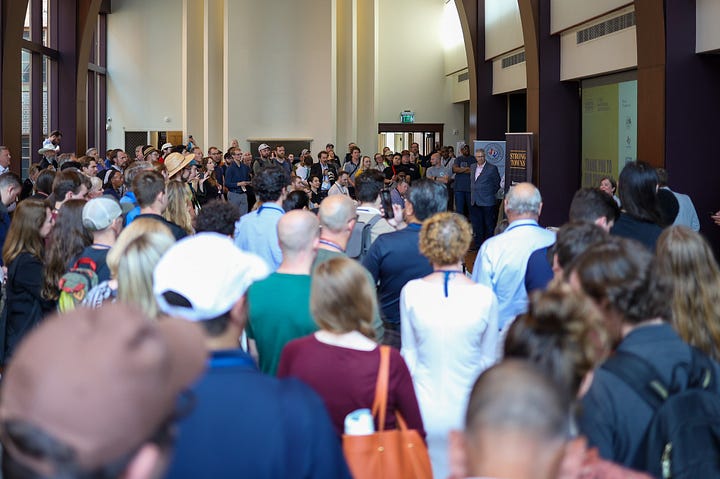
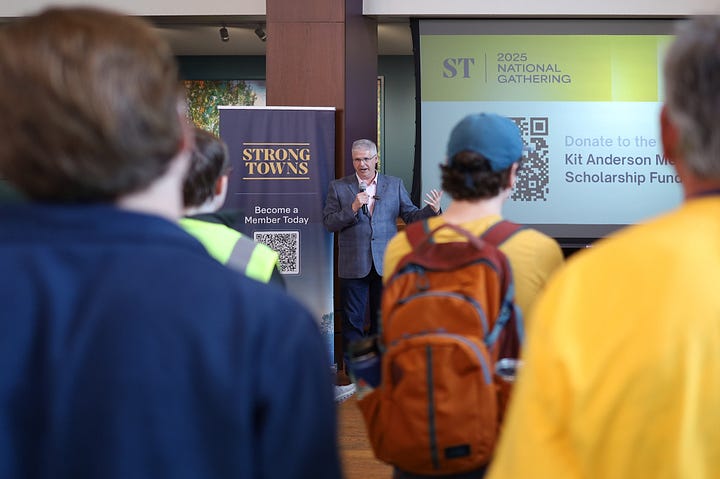
What’s next for Dallas?
You know that feeling you had as a kid when you got a new Lego set from Toys “R” Us and couldn’t wait to get home to start building and creating? That’s exactly how I feel coming home from the Strong Towns National Gathering.
As a Strong Towns Local Conversation, we’re about to take things to the next level. There’s never been a better time to get involved—so if you haven’t already, join our Local Conversation today!



